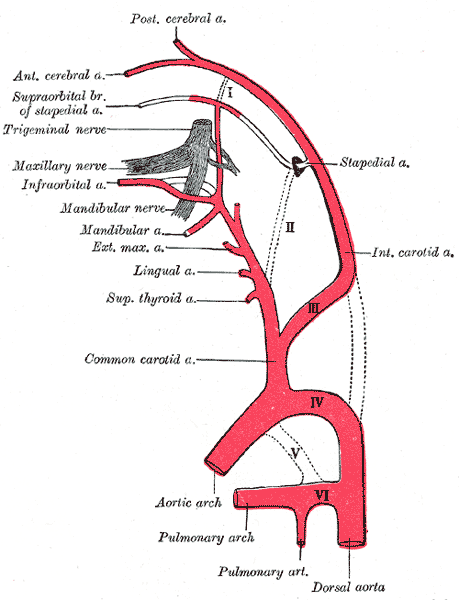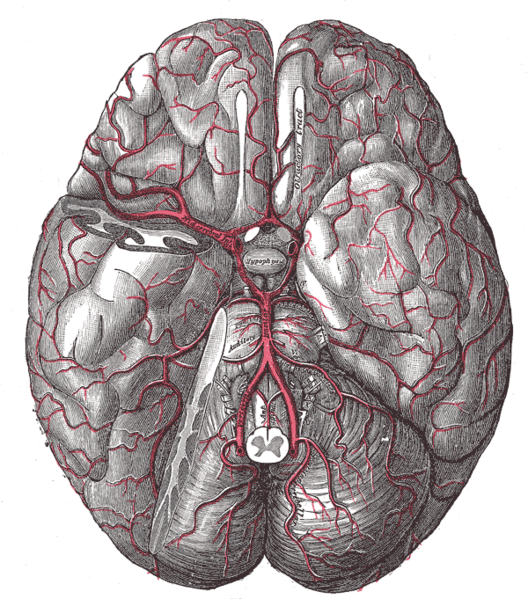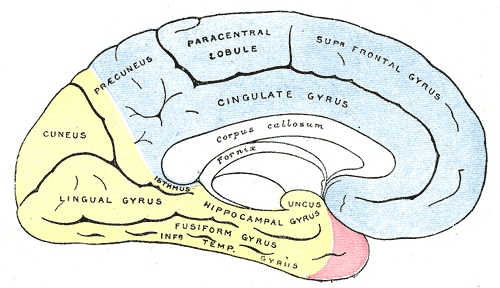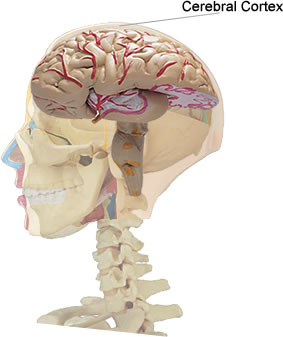Anterior cerebral artery
| Cardiology Network |
 Discuss Anterior cerebral artery further in the WikiDoc Cardiology Network |
| Adult Congenital |
|---|
| Biomarkers |
| Cardiac Rehabilitation |
| Congestive Heart Failure |
| CT Angiography |
| Echocardiography |
| Electrophysiology |
| Cardiology General |
| Genetics |
| Health Economics |
| Hypertension |
| Interventional Cardiology |
| MRI |
| Nuclear Cardiology |
| Peripheral Arterial Disease |
| Prevention |
| Public Policy |
| Pulmonary Embolism |
| Stable Angina |
| Valvular Heart Disease |
| Vascular Medicine |
Editor-In-Chief: C. Michael Gibson, M.S., M.D. [1]
In human anatomy, the anterior cerebral artery supplies oxygen to most medial portions of frontal lobes and superior medial parietal lobes. It arises from the internal carotid artery and is part of the Circle of Willis.
The left and right anterior cerebral arteries are connected by the anterior communicating artery.
Areas supplied
Areas supplied by the anterior cerebral artery include:[citation needed]
- The medial surface of the frontal and parietal lobes
- The anterior four- fifths of the corpus callosum
- Approximately 1 inch of the frontal and parietal cortex
- Anterior portions of the basal ganglia and internal capsule
Occlusion
Occlusion of the anterior cerebral artery may result in the following defects:[citation needed]
- Paralysis of the contralateral foot and leg
- Sensory loss in the contralateral foot and leg
- Urinary incontinence which usually occurs with bilateral damage
Branches
The anterior cerebral artery branches into e.g. the following arteries:
Additional images
-
Diagram showing the origins of the main branches of the carotid arteries.
-
The arteries of the base of the brain.
-
Medial surface of cerebral hemisphere, showing areas supplied by cerebral arteries.
-
Location of the cerebral cortex
External link
- Template:LoyolaMedEd
- Template:SUNYAnatomyLabs
- UMichAtlas|n3a8p1
- Template:RocheLexicon
- Template:RocheLexicon
- Blood supply at neuropat.dote.hu
Template:Arteries of head and neck



